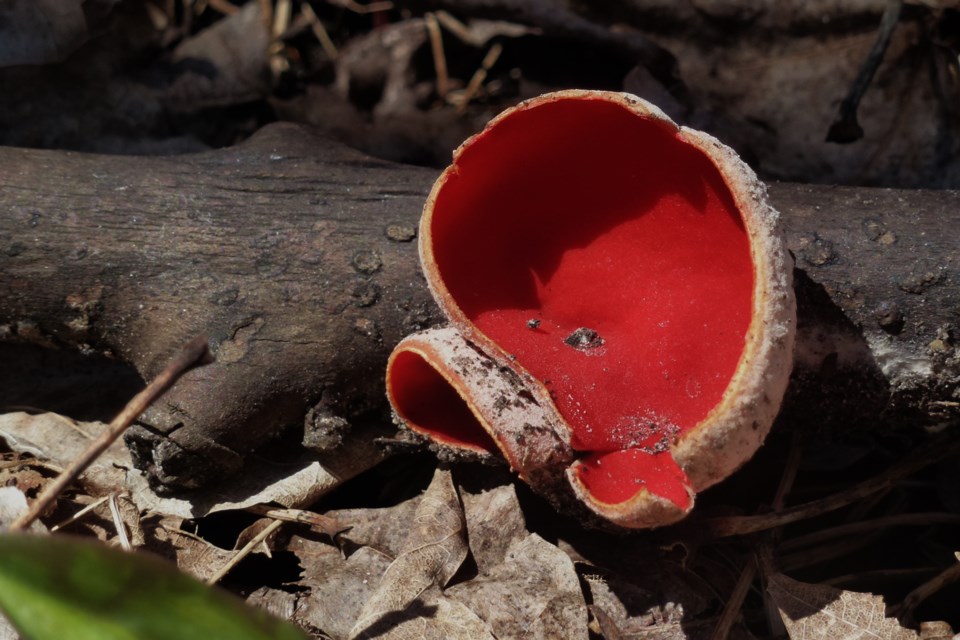It doesn’t take a keen-eyed naturalist to tell you that this whack-a-doodle weather pattern is not normal. Here we sit in early March with the snow gone, maple sap running full tilt, and garden flowers blooming. It’s just not right, I tell ya.
March is usually the month I offer up hope in this column, sharing some early signs of spring that will carry us through the last four weeks of snow, ice and slush. Not this year, as many of those harbingers have happened already ... red-winged blackbirds are back, chickadees have been whistling “sweet spring” for weeks, and the catkins of birch and grey alder have already quadrupled in size.
While taking advantage of this warm weather and working in the woodlot, another sign of spring suddenly appeared in front of my boots ... a scarlet cup fungus! I use an exclamation point for that statement as these fungi are indeed show-stoppers.
Their brilliant red (OK, scarlet) colouration stands out like a blast against the dull brown and blacks of old wet leaves on the forest floor. They are unofficially the first fungus to appear in the spring; while there are others that have been sitting, waiting, over the winter months, they are not even close to being as dazzling as a newly formed scarlet cup!
Much like other fungi, scarlet cups are fussy about where they grow. They like to be on a stick. Not just any stick, but a hardwood stick. And not just any hardwood stick, it has to be oak or maple. And the stick has to be dead, and laying on the forest floor. And if the dead oak stick laying on the forest floor is covered with last fall’s wet and rotting leaves, so much the better.
Scarlet cups are decomposers, a group of fungi that are essential in the natural ecosystem of a forest complex. As they grow they break down the cellulose wood fibres to basic elements that are released back to the soil and made available for other plant growth.
Unlike other familiar umbrella-shaped mushrooms that drop their spores downwards from gills, sac fungi shoot their spores skywards. There is another fungi group, the puffballs, that also disperse spores by releasing them up and out rather than down to the ground.
Now here’s a really cool thing about these scarlet cups ... you can hear them!
When the inner red surface of the cup is heated up and the time is ripe, the release of these millions of spore capsules is an evet to behold. Sometimes you can encourage this release by blowing a puff of warm air into the cup ... wait a few seconds ... and “whoosh” go the sacs!
Other springtime sac fungi include the morels, but I have found it is usually May before they appear.
If you wish to delve into fungi identifications, now is a good time to start as only a few are fruiting in the spring ... by the time we reach September and October the immense number of species can be challenging to keep tabs on.
Two good field guides are: Mushrooms of Ontario and Eastern Canada by George Barron; and Fascinating Fungi of the North Woods by Mollen and Weber. While you can no doubt find them online I do encourage you to first check in with our local bookstores.
If you are attending a maple syrup open house (an activity which I highly recommend that you do, even if you’ve done it before, but that was years ago, right?), keep an eye to the ground for these unique components of the forest’s ecology.
It may be an early spring by our standards, but Mother Nature is rocking along as best she can.



